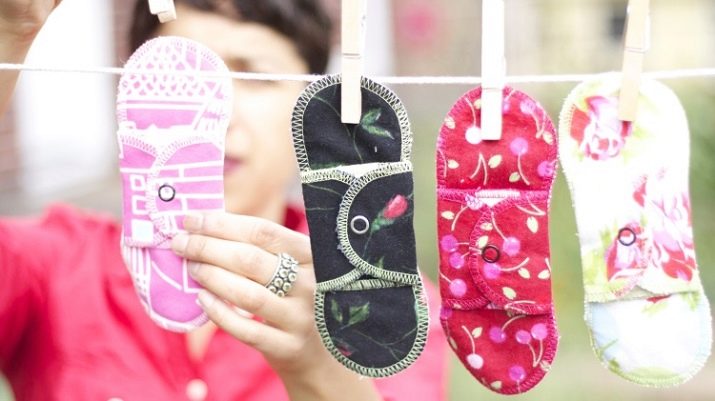Everything you need to know about reusable pads
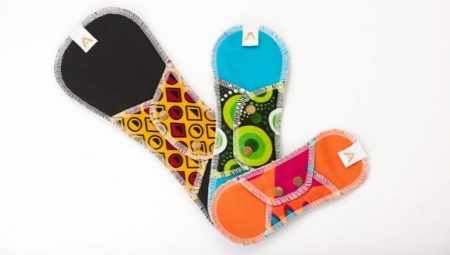
For most women, reusable pads are associated with something unpleasant, dirty and even smelling bad. For the sake of fairness, it should be noted that such a "technology" of protection against leaks has been carried out for several millennia by all women.
But modern products have improved many of their parameters. Reusable pads of modern tailoring can surprise with their quality and ease of use. Read about what they are and how to use them in this article.
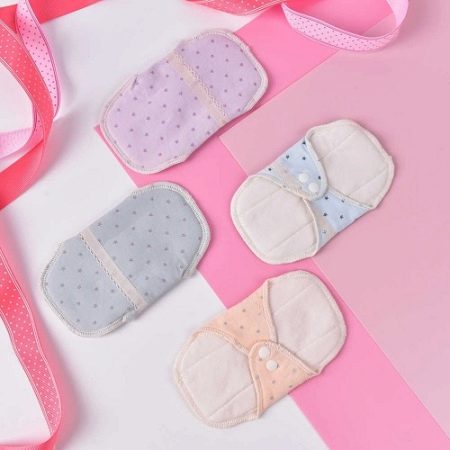
Advantages and disadvantages
Let's talk about the merits of reusable pads and the reasons why many women are switching to them.
- Are breathable... Thanks to this, their use becomes much more comfortable.
- Variety of colors... Perhaps for some, this point is not important. This criterion is the only one when choosing such products.
- Long service life. Typically reusable models can last from 3 to 5 years.
- Environmental friendliness of the product. Disposable items are made of artificial materials, the main of which is polyethylene. As you know, it alone decomposes over time. On average, one disposable pad takes 500 to 700 years to decompose. And reusable ones are made from fabrics, the decomposition period of which is shorter.
- Saving... The consumption of reusable products is incomparably less than disposable counterparts. Every girl and woman knows that the cost of a pack of disposable pads is growing every year.The average cost of hygiene products for the year is about $ 100, in rare cases the annual total cost of them can be large. On average, each woman can spend from 11 to 17 thousand disposable units of hygiene products in her life, and this is only during her period. Fabric products cost from 300 to 1000 rubles apiece, but they serve for a very long time. Even taking into account the consumption of water and funds for their washing, the consumption for them comes out less.
- When using disposable pads, a "greenhouse effect" can occur. This condition causes severe itching, discomfort, and even irritation. The use of tissue analogs prevents this.
- Women's tissue pads, after use, smell different from disposable counterparts. Due to the fact that air exchange occurs through the fabric product, the discharge dries up. They do not react as in the case of disposable products. Also, due to the access of oxygen, bacteria do not multiply on tissue products, which cannot be said about disposable ones. This is especially noticeable if the pad has to be worn for 8 or more hours. In this regard, disposable products are not entirely hygienic.
- Tissue analogues are hypoallergenic... The surface of disposable products is treated with chlorine and aromatic compounds, to which some girls may be allergic. Allergy to natural fabrics is a very rare case. Wearing daily pads for several years almost always leads, if not to skin rashes, then to discomfort and even infections. With fabric pads, this problem will disappear.
- A number of women claim that with the beginning of the use of tissue pads, the intensity of the rash has decreased, and in some, the rash has completely disappeared. There are also references to the fact that with eco-pads, menstrual pains have decreased and disappeared.
Many are inclined not to believe the latter, but, definitely, the condition of the skin of the intimate area, in contact with natural materials, improves during this special period.
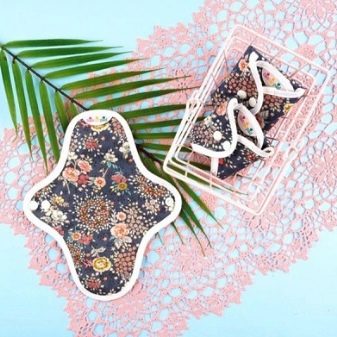

Consider the disadvantages of reusable products.
- Inaccessibility... Reusable hygiene products are not so often found in a regular store, which cannot be said about disposable ones. The latter can be found even in a small shop on the outskirts of small towns. Reusable analogs must be ordered through online stores or sewn to order.
- Inconvenience... During travel, relocation or other force majeure circumstances, washing of reusable products becomes unavailable. In this case, one cannot do without disposable analogs.
- Most women, and especially working women, are unaccustomed to think that with the purchase of fabric products, gaskets will need to be washed. In fact, it is unusual only at first, later it becomes a common thing, no different from any other wash.
- Sterility... It seems that tissue products have lower levels of sterility, but a number of studies have shown that both tissue and disposable products are not equally sterile.
Simply put, the susceptibility to infections depends on the human body itself. Sterility depends on the frequency of product changes.

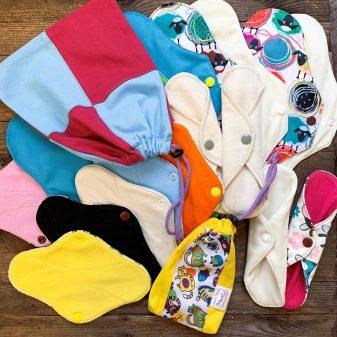
What are they?
Reusable pads are also eco-friendly pads for women. They got their name because the top layer adjacent to the skin is always sewn from natural fabrics - cotton, flannel, flax, bamboo and even silk. But most often the pads are made of cotton. According to consumer reviews, a gasket containing cotton and bamboo has become very popular. It is believed that such a product is the most hydrophilic. The outer part is sewn from both synthetic and natural fabrics. In case of irritation to synthetics, you need to give your preference to completely natural products. In the middle of the product there is a fabric made of a special membrane that does not allow liquid to pass through.In addition to the three basic layers, manufacturers or craftswomen can add any number of layers of their choice. There are also models with removable pads.
According to the assortment offered by the modern market of reusable pads, according to the level of absorbency, the products can be conditionally divided into 4 categories: daily (thinnest), Light, Medium and Super.
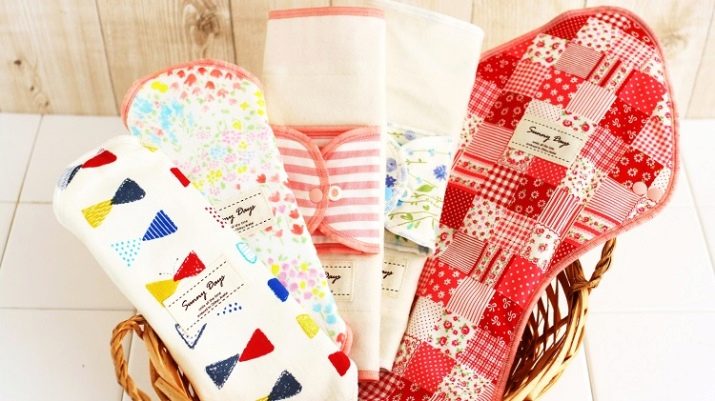
For critical days
Like disposable, reusable pads are available for night and day. Similar pads are used for menstruation. The size determines their level of absorbency. Night pads are easy to recognize by their length - they are able to close the distance from the coccyx to the pubic bone. Day pads are of medium size, similar to disposable pads with 4 drops of absorbency. If you do not want to wash fabric pads daily, then on average you may need 13 to 15 pads.
Of course, the purchase of a pair of products is also allowed. In this case, they will have to be washed daily or even more often.
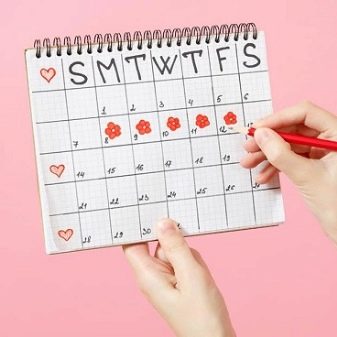
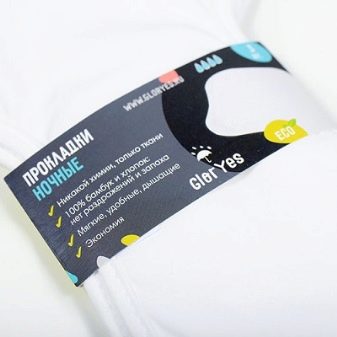
Daily
Initially, thin fabric pads were used as insurance for menstrual cups in a known period, only later they began to be used "for every day." These products are easier to care for than the pads used during your period. They can be washed by hand and at low temperatures. Often, just soap is enough for washing. Due to the small thickness of these products, it may seem that they can be dried on a battery or ironed with an iron, but this cannot be done. In general, they are pleasant to the touch, practically "second panties", which is very convenient in the hot season.
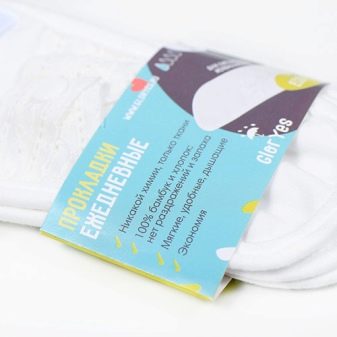
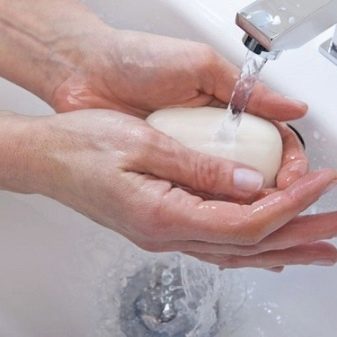
How to use it correctly?
The pads are placed with the side with the stitching on top, after the wings are thrown onto the outer underside of the panties, and the button located on them is fastened. Large spacers can have two or more buttons. For panty liners, it doesn't matter which side is on top. If the pad does not have a button or other fastener, then in order to prevent the product from slipping, it is embedded in dense underwear. It is recommended to change the gasket every 4 hours.
After use, the gasket is folded into an envelope. In this sense, the button is very convenient - it reliably holds the gasket in the folded state and does not allow the contents to flow out. It is best to wash all used pads at the end of the day. For storage, as a rule, a waterproof bag is used. It can be purchased from your reusable pad retailer. The pads tolerate machine wash quite well. Most pads can be washed at 90 degrees. It is recommended to do this only if there are unwashable stains on the product.
Oxygen bleach is recommended to fight stains. Some also use hydrogen peroxide. However, 50-60 degrees will be more than enough. Hand wash is also allowed on request. After washing at this temperature, it is safe to continue using the pads. The products must be dried flat.
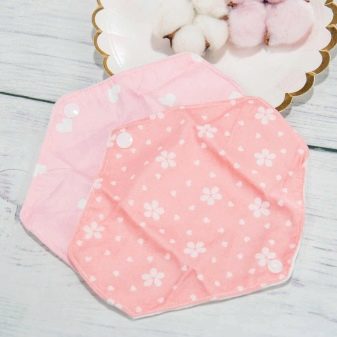

You cannot put them on a battery or dry them with an iron - this is fraught with a violation of the integrity of the membrane layer.
Often, stains (with bleach and other substances) are washed after each cycle. Do not use harsh bleaches or stain removers. If the stains are not washed off, then the pads are soaked overnight. The pads should be washed separately from the rest of the laundry. Do not twist the gaskets while squeezing.
If you just want to start using reusable products, it is recommended that you try to wear them only at home at first. It is important to wear them on all days of your period. Once you get used to them, you can already start going out with pads for short walks. Another alternative is to start your acquaintance with reusable pads with panty liners. They are simple and easy to use, almost invisible.
Thus, tissue pads are a proposed alternative to disposable hygiene products. If their use causes discomfort, then it is worth giving them up.
